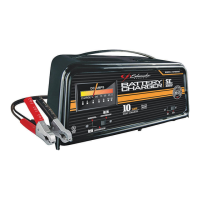
Do you have a question about the Schumacher SE-3004 and is the answer not in the manual?
| Type | Automatic Battery Charger |
|---|---|
| Input Voltage | 120V AC |
| Battery Types Supported | Standard, AGM, Gel |
| Cable Length | 6 ft |
| Output Voltage | 6V / 12V DC |
| Charging Modes | Trickle Charge, Fast Charge |
| Safety Features | Overcharge protection |
| Charging Current | 2A / 10A |
Covers general usage, cord safety, and charger handling to prevent injury and damage.
Warns about explosive gases from lead-acid batteries and emphasizes following instructions.
Advises on personal safety measures when working near a lead-acid battery.
Steps and precautions for preparing the battery and environment before charging.
Guidelines for selecting a safe and appropriate location for the battery charger.
Precautions to take when connecting and disconnecting the DC output clips.
Instructions for connecting the charger to a battery installed in a vehicle to prevent sparks.
Steps for connecting the charger to a battery that has been removed from a vehicle.
Details on how to properly connect the AC power cord and grounding plug.
Explains the self-resetting circuit breaker and its behavior during overloads.
Guidance on setting the voltage selector switch to match the battery voltage.
Information on charge rate control, manual mode, and selecting battery types.
Describes how the ammeter and charge current should behave during charging.
Explains how to estimate charge time based on battery AH and tapering current.
Instructions to follow before disconnecting the charger from the battery.
Recommendations for storing the battery charger in a dry area.
How to distinguish between Maintenance Free and Low Maintenance/Conventional batteries.
Troubleshooting common issues like no meter reading or incorrect charging current.
Details the two-year limited warranty against defects in material or workmanship.
Outlines conditions that void the warranty, such as misuse or unauthorized repair.

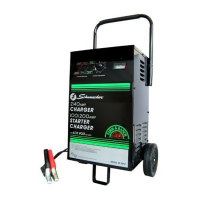
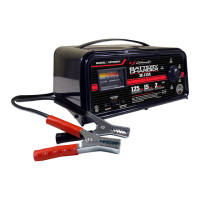
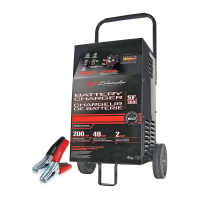



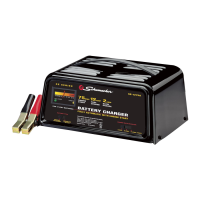




